| Saipan 1944:
Scenario Preview, Part Four
By Mike Bennighof, Ph.D.
October 2021
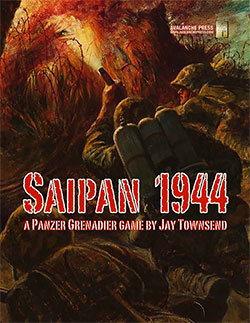 “Land war in Asia” is supposed to be as deadly for game sales as it is in politics, yet Panzer Grenadier: Saipan 1944 has sold surprisingly well. Strong game design, and a fine set of scenarios, has a lot to do with its enduring popularity. Let’s take a look at the final set of ten scenarios. You can see the rest of the scenario previews inPart One, Part Two and Part Three. “Land war in Asia” is supposed to be as deadly for game sales as it is in politics, yet Panzer Grenadier: Saipan 1944 has sold surprisingly well. Strong game design, and a fine set of scenarios, has a lot to do with its enduring popularity. Let’s take a look at the final set of ten scenarios. You can see the rest of the scenario previews inPart One, Part Two and Part Three.
Scenario Thirty-One
The Unusual Situation
28–29 June 1944
On the evening of 28 June the American forces experienced the usual every-night Japanese patrols complemented by air raids on the airfield and shipping. But the 23rd Marine Regiment encountered something a little different - the headlights of nearly a dozen Japanese trucks heading straight for them.
Conclusion
The Japanese trucks made a hasty retreat when the drivers realized they were headed for the American lines. Meanwhile, the Marines killed 10 Japanese patrol members that night. Whether the two forces were related or not is unknown.
Notes
This is definitely an unusual situation. Two small infantry forces are prowling about in the dark, and a contingent of Japanese trucks comes roaring onto the board and attempts to load up with troops and then get away before the Marines can shoot them up.
Scenario Thirty-Two
Proximity Fuzes
29 June 1944
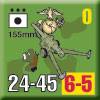 Every time the Marines attempted to advance through Garapan the Japanese defenders raked them with heavy fire from fortified caves on the adjacent Flametree Hill. To make matters worse, the Japanese would retreat back under cover before the American artillery could respond. Something had to be done. Every time the Marines attempted to advance through Garapan the Japanese defenders raked them with heavy fire from fortified caves on the adjacent Flametree Hill. To make matters worse, the Japanese would retreat back under cover before the American artillery could respond. Something had to be done.
Conclusion
The Marines fired a smoke screen with their mortars; the Japanese fell for the ruse and came out of their caves to defend against what they thought was another Marine advance. Instead of a line of Marines they met a hail of high-explosive time-fuzed artillery shells. The Marine units were now able to clean up the rest of the area.
Notes
The Japanese have another tough hilltop position to defend, but this time the Marines have proximity fuzes for their artillery. The Japanese player knows this, where his or her historical counterpart did not, but it’s still going to be tough to hold out against that sort of firepower.
Scenario Thirty-Three
Purple Heart Ridge
30 June 1944
On the 29th and 30th of June, soldiers of the 27th Infantry Division burst through Death Valley and wiped out Japanese stragglers trapped in Hell’s Pocket. Meanwhile the 2/165 was still trying to eliminate die-hard Japanese entrenched on Purple Heart Ridge.
Conclusion
The Fighting Sixty-Ninth finally seized all of its objectives. It was a tough one week ordeal but as General Schmidt later observed: “no one had any tougher job to do.” The Army sustained most of the 1,836 casualties it suffered on Saipan in clearing Death Valley and Purple Heart Ridge.
Notes
The Fighting Sixty-Ninth is up against a strong Japanese hilltop position, but the Japanese are starting to lose their will to fight and the Americans are gaining theirs, giving the original Fighting Irish a serious morale edge for the assault combat that’s sure to come.
Scenario Thirty-Four
The Fate of Company B
2 July 1944
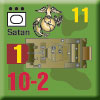 The Marine regiment moving toward the coast above Garapan stumbled across a sheltered ravine defended by Japanese field pieces supported by riflemen and machine guns. Colonel James P. Riseley bypassed it and left his 3rd Battalion’s Company B to eliminate the threat. The Marine regiment moving toward the coast above Garapan stumbled across a sheltered ravine defended by Japanese field pieces supported by riflemen and machine guns. Colonel James P. Riseley bypassed it and left his 3rd Battalion’s Company B to eliminate the threat.
Conclusion
The Marines advanced to find the concealed Japanese positions one-by-one, and work close enough to engage in savage close-quarters fighting that, thanks to the harsh terrain, usually devolved into short-range grenade-tossing contests between the Marines and the Japanese. Eventually Company B rooted out all the Japanese.
Notes
Marine infantry advances against Japanese artillery. That firepower isn’t going to help the Japanese all that much, so they need to inflict as many quick casualties as they can since the Americans are very loss-averse in this scenario.
Scenario Thirty-Five
Garapon: City Fighting
2 July 1944
Second Marine Division Headquarters had transmitted the order to its 2nd Marine Regiment the day before to advance into and seize control of the town of Garapon, the largest city on Saipan and the second largest in the Marianas. The 1st and 3rd Battalions supported by the 2d Tank Battalion and 2d Armored Amphibian Battalion planned to attack the remaining Japanese defenders in Garapon and the adjacent Flametree Hill area. They also planned to clear the adjacent beach area that still contained Japanese heavy weapons near the water’s edge.
Conclusion
Repeated treatments from artillery, aircraft and naval guns had pretty much leveled Garapan. Nevertheless, the Marines still needed their assault engineers, flamethrowers and armor support to root out enemy casemates, snipers, and infantry. The amphibious armor helped silence the Japanese heavy weapons still on the beach. By nightfall, Garapan was in the Marines’ hands and they could settle in for a well-deserved C-ration.
Notes
You get it all in Saipan 1944, including a city fight. The Japanese are well-fortified with a good bit of support weaponry plus some armed casemates. The Marines fling it all at them: tanks, flamethrowers, tanks with flamethrowers and engineers. This one is going to be a tough fight.
Scenario Thirty-Six
Shifting the Lines
2 July 1944
 Howlin’ Mad Smith decided it was time to slowly withdraw the 2nd Marine Division out of the line to rest them for the upcoming Tinian Campaign (the island is approximately 30 miles southwest of Saipan). To achieve this, the 27th Infantry Division would shift west towards Tanapag. July 2nd was already a busy day for them as the 165th Regiment was mopping up in rough terrain while the 3/105 was pinned down under heavy enemy fire creating a gap between them and their neighbors, the 3/165 and the 106th. The 1st Battalion of the 105th Regiment was ordered north to close this gap. Meanwhile the 106th encountered enemy tanks dug in for use as casemates as they maneuvered toward their assigned area. Howlin’ Mad Smith decided it was time to slowly withdraw the 2nd Marine Division out of the line to rest them for the upcoming Tinian Campaign (the island is approximately 30 miles southwest of Saipan). To achieve this, the 27th Infantry Division would shift west towards Tanapag. July 2nd was already a busy day for them as the 165th Regiment was mopping up in rough terrain while the 3/105 was pinned down under heavy enemy fire creating a gap between them and their neighbors, the 3/165 and the 106th. The 1st Battalion of the 105th Regiment was ordered north to close this gap. Meanwhile the 106th encountered enemy tanks dug in for use as casemates as they maneuvered toward their assigned area.
Conclusion
The 106th infantry knocked out five enemy tanks emplaced as pillboxes and make good progress shifting to their new position. By 1800 the 27th Infantry Division had re-formed its lines and was ready to take on the main effort the next day, but Lt. Gen. Yoshitsugu Saito, the Japanese commander on Saipan, had ordered his troops to pull back and re-organize for a final stand on the north end of the island.
Notes
The Japanese have run out of fuel for their tanks, and dug them in as immobile defensive strongpoints. Site them well as the Japanese player, because they’re pretty much the best defense you’ll have against the American light tanks spearheading their advance.
Scenario Thirty-Seven
Mutcho Point
4 July 1944
Most of the surviving Japanese defenders of Garapan retreated to nearby Mutcho Point, where an anti-aircraft battery did its best to shelter them from further Marine attack. Prior to leaving the line for a well-deserved rest, the 3rd Battalion of the 2nd Marine Regiment received the assignment to finish off the Japanese garrison there as well as the remnants which had joined them. With no hope of escape or relief, the defenders prepared to sell their lives dearly.
Conclusion
The major obstacle for the Marines in this operation was the heavy antiaircraft battery on the point. The 120 Type 10 dual-purpose gun could be employed as both an antiaircraft gun and in a direct fire support role against ground targets. Both the Army and the Marines encountered these types of guns on Saipan. The crews on Mutcho Point employed theirs with skill and bravery, but ultimately they could not stop the Marines.
Notes
That 120mm anti-aircraft battery is every bit as deadly as the scenario notes make out. But once it’s out of action, the Japanese are going to be in big trouble. Of course, once it’s out of action, the Marines have pretty much fulfilled their victory conditions. So protect the big cannon!
Scenario Thirty-Eight
Paradise Valley
6 July 1944
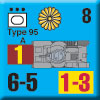 Fourth Marine Division took command of the final assault to finish off the last Japanese defenders of Saipan, but soon found itself lacking enough manpower for the task. The division’s reserve was ordered into the line near an area the Japanese called Paradise Valley. The Marines probed forward, but the fighting to follow assured that neither side would call the location Paradise. Fourth Marine Division took command of the final assault to finish off the last Japanese defenders of Saipan, but soon found itself lacking enough manpower for the task. The division’s reserve was ordered into the line near an area the Japanese called Paradise Valley. The Marines probed forward, but the fighting to follow assured that neither side would call the location Paradise.
Conclusion
The 23rd Marines probed the fringes of Paradise Valley. The Japanese had fortified the area heavily to protect nearby beaches from landings, and now turned these defenses on the Marines. As the Marines advanced, fire from caves and underbrush, much of it coming from their rear flank, brought their advance to a halt. It would take an attack by the Army’s 27th Infantry Division to clear Paradise Valley when the Marines could not, something Army officers still fuming over Ralph Smith’s firing gleefully pointed out.
Notes
The Japanese have fairly good numbers in this little scenario, strong defenses and a fair amount of machine gun support. The Marines can call on the aid of Satan as well as foot-borne flamethrowers, and these are going to have to do the heavy work of clearing the Japanese positions.
Scenario Thirty-Nine
Desperation
7 July 1944
By now, General Saito despaired of being able to drive off the Americans. Daily raking by American artillery and naval gunfire, augmented by aircraft attacks, had whittled his force down considerably. His superior, Vice Admiral Chuichi Nagumo (of Midway fame) had shot himself the night before. As his last decision, Saito directed a last grand banzai charge to be carried out before the dawn of July 7th. Too sick to lead the attack himself, the General committed hara-kiri before the actual assault. About 0400 the main attack started with between 3,000 and 4,000 men (including many civilian men and women wielding bamboo spears) divided into three main prongs.
Conclusion
The night was filled with confusion and death. The 1st and 2nd Battalions of the 105th Infantry were overrun, as well as some of the Marine artillery battalions. House-to-house fighting encompassed the village of Tanapag. Major McCarthy, one of the few officers to survive the attack, said: “These Japs just kept coming and coming, it didn’t make a difference if you shot one, five more would take his place.” But in the end, the Japanese spent the last of their manpower on this attack, and 4,311 of their corpses were found in the aftermath. The 105th Infantry lost 406 men killed and 512 wounded. The 3rd Battalion, 10th Marine Regiment lost 45 Devil Dogs killed and 82 more wounded. The battle for Saipan was nearly over.
Notes
The Japanese fling themselves on the Marines with everything they’ve got, even a small Navy tank unit. The Marines have massive firepower on hand. This is not going to end well for the Emperor.
Scenario Forty
Prudential Hill
7 July 1944
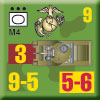 The cliffs overlooking Karaberra Pass were nicknamed “Prudential Hill” by the Marines because it resembled an insurance company’s logo. The Marines mopping up this hill faced some stubborn resistance, with mines at the base of this hill and some remaining die-hard sons of Nippon on top. The cliffs overlooking Karaberra Pass were nicknamed “Prudential Hill” by the Marines because it resembled an insurance company’s logo. The Marines mopping up this hill faced some stubborn resistance, with mines at the base of this hill and some remaining die-hard sons of Nippon on top.
Conclusion
Digging the last few Japanese out of their holes proved a challenge. The Marines even lowered a truck-mounted rocket launcher down a cliff using tanks and chains to help overcome the Japanese resistance. Offshore gunboats also blasted the holdouts’ caves. On July 9th, Vice Admiral Turner declared the island secured. Some mopping up would continue but the Japanese were finished as a fighting force. At Marpi Point on the 9th of July one more tragic event took place as hundreds of Japanese civilians jumped to their deaths, committing mass suicide. Many civilians - Chamorros, Kanakas, Korean, Formosan and Japanese - suffered throughout the battle, hiding in caves.
In the end, Saipan cost the Americans 3,225 killed, 13,061 wounded, and 326 missing in action. In return, they killed 23,811 Japanese and captured another 736. The number of civilians killed is not known but it was very high. The Japanese didn’t have time to prepare all their defenses and many naval guns planned for installation were not in place; the weapons would be found still in their crates in the rail yards of Garapan. Many of the Japanese infantry units were stationed on Saipan by accident, survivors of U.S. air and submarine attacks on their convoys heading to other areas in the Pacific but dropped off on Saipan. Saipan was a decisive engagement, both militarily and politically, and its fall pierced the Japanese National Defense Zone.
Notes
The last battle brings some tired Marines with many weapons against a small Japanese garrison on a hill. There’s nowhere left to retreat; if a single Japanese unit survives the game, the Japanese win.
And that’s it for Saipan 1944!
Get in the game! Order Saipan 1944 right now!
Sign up for our newsletter right here. Your info will never be sold or transferred; we'll just use it to update you on new games and new offers.
Mike Bennighof is president of Avalanche Press and holds a doctorate in history from Emory University. A Fulbright Scholar and NASA Journalist in Space finalist, he has published an unknowable number of books, games and articles on historical subjects.
He lives in Birmingham, Alabama with his wife, three children and his dog, Leopold.
Want to keep Daily Content free of third-party ads? You can send us some love (and cash) through this link right here.
|
